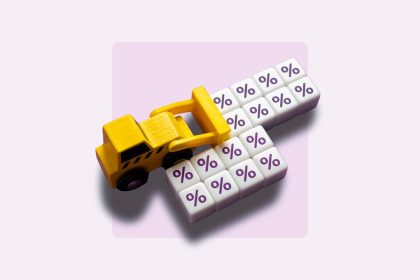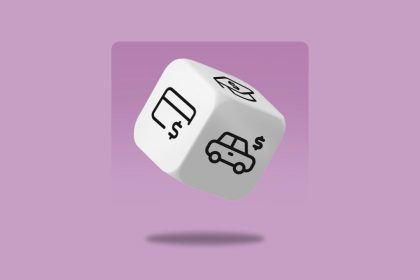Key takeaways
- There are multiple ways to pursue debt relief and reduce the amount you owe — or at least make it more affordable.
- The cost of debt relief will depend on the route you choose and whether you decide to negotiate with creditors on your own.
- Be prepared to take three to five years to complete any debt relief or debt reduction program.
Getting rid of debt is a goal many Americans have. Not only does eliminating debt improve your financial health, but it is also likely to have a positive impact on your mental health. Assessing your outstanding balances, selecting a debt payoff strategy, and formulating a game plan are good starting points for getting out of debt once and for all.
Once you have a clear view of what you owe, you take steps to start making progress and pay down your balances. You can use the following tips to get out of debt.
1. Re-examine spending habits
Your spending should be divided between need to have and nice to have. “Need to have” refers to essential necessities, including food, shelter, utilities, transportation and clothing. “Nice to have” is everything else.
While whittling down your debt, you can’t slack off on your “need-to-have” expenditures. But you can decrease your “nice-to-have” spending and use that extra toward paying down a credit card or loan balance.
Cancel that gym membership or streaming service you don’t use. Cut back on meals out or the daily coffee shop visits. Get rid of that streaming subscription you don’t use. Eliminating a $15-per-month streaming subscription gives you an extra $180 a year, which you can dedicate to debt.
2. Determine the right payoff approach
The common approaches to paying down debt are snowball and avalanche.
Debt snowball – smallest first
Through the debt snowball strategy, you make minimum payments on all credit accounts and loans — except for the account with the smallest balance, where you put all extra dollars. Once you’ve paid that balance, turn to the account with the next-smallest balance and work on that. Continue this approach until your debt is gone.
As you pay off balances, the amount available to pay off debt “snowballs” into a larger sum, allowing you to pay accounts down more quickly.
The snowball strategy’s main benefit is the quick wins. Seeing a credit card balance at zero within a few months can motivate you to continue. But while you’re paying off smaller amounts, your higher-interest-rate account balances continue to grow, making this method potentially costlier.
Debt avalanche – starting big
With the debt avalanche strategy, you make minimum payments to all accounts. Your primary focus and all extra money go to the highest interest-rate balance. Once the balance reaches zero, concentrate on the card or loan with the next-highest interest rate and whittle that down.
The debt avalanche approach eliminates the most expensive debts first, which helps you save on interest payments. However, this strategy requires motivation and perseverance. Your higher-interest-rate accounts could also be the largest balance accounts, which generally take longer to pay off.
3. Go beyond the minimum
Paying more than the minimum on a credit card or loan means the account hits a zero balance faster, and you can save interest on the outstanding balance. For example, consider a credit card with a $5,000 at a 20 percent interest rate. Even a small bump in the monthly payment you make can shave significant time off your repayment period (and save you hundreds in interest).
| Monthly payment | Total interest paid | Months to payoff |
|---|---|---|
| $100 | $5,840 | 109 months |
| $150 | $2,359 | 50 |
| $200 | $1,522 | 33 months |
| $250 | $1,133 | 25 months |
Paying more than the minimum can also lower your credit utilization ratio. This percentage represents how much credit you use relative to how much you have. A lower utilization ratio improves your credit score.
Bankrate’s credit card payoff calculator can help you determine minimum payment amounts, interest accrual and how long it takes to pay off a balance.
Reducing spending is one way to generate extra cash. You can also use unexpected amounts, large and small, toward getting out of debt where you can.
Using the windfall
If you’ve received a windfall like a large cash infusion from a tax return, work bonus or money from a generous relative, put some of it toward the debt you owe and keep a little to treat yourself to a night out or other fun activity. Every little bit helps when working toward your debt-payoff goals.
Generate small savings
You can also make a dent in debt with the debt snowflake strategy. This method requires you to find small savings and direct those little extras toward debt. There are plenty of ways to do this, like:
- Buying generic products.
- Using coupons for purchases.
- Carpooling to save on gas.
- Limiting water and electricity usage.
A few dollars a week won’t clear your debt overnight, but small savings can help reduce what you owe and help you move toward debt freedom more quickly.
5. Consider debt consolidation methods
Using a debt consolidation loan or transferring what you owe to a 0 percent APR credit card is one way to handle your debt. Both of these methods let you pay off multiple creditors and lenders, leaving you with a single monthly fee that goes toward the balance of the loan or card.
This approach can make budgeting easier (you’re eliminating multiple payments for one). You could also find yourself with more funds to make that payment, as you’ve eliminated multiple credit card and lender interest rates.
However, pay attention to information like interest rates and loan terms (i.e., origination fees and the time you have to repay) before signing on the dotted line.
6. Embark on a debt management plan
A debt management plan (DMP) can help you in the following ways:
- You work with a credit counseling agency to develop a budget to manage your finances.
- That agency works with creditors to negotiate concessions like fee waivers or reduced interest rates.
- If the creditors agree to cooperate, you make one monthly payment to the credit counseling agency, which pays each creditor.
There are a couple of caveats here. First, reputable DMP agencies are nonprofit, but you’ll likely pay a fee attached to your monthly payments.
Second, it’s not a good idea to open new lines of credit or take out loans while on the plan. You’re using the DMP to pay off debt, not accrue more. Also, if you recently entered a DMP (which might be reflected on your credit report), lenders and creditors might be reluctant to give you a loan or credit card. Those that do might only offer rates for bad credit, which means a higher annual percentage rate (APR) or fee.
7. Settle for less than what you owe
A debt settlement program means contacting creditors to settle for less than what you owe.
You can either do the job yourself or go through a third-party debt relief company that negotiates with creditors on your behalf. Depending on the terms of the agreement, you could end up paying less than what you owe or see your interest rates and fees reduced or waived.
“Debt settlement is beneficial to many, but that doesn’t mean it’s the right option for everyone,” says Adem Selita, co-founder of The Debt Relief Company. “It’s not as innocuous as a debt consolidation loan, but it’s not as harmful as a bankruptcy. In terms of impact, there aren’t many other options that can help you get out of debt quicker and save you more money than debt settlement. However, [you] could be liable for tax payments, and your credit score could be negatively affected.”
If you choose to pursue debt settlement on your own, you will need to be prepared to negotiate directly with creditors and pay a set amount toward your debt. A debt settlement program can simplify this process — at the expense of added fees.
Bottom line
Although it takes diligence and consistency, getting out of debt is possible. Following the above strategies can help you reduce your debt while improving your financial health. While you’re paying down debt, examine and modify behaviors that got you there in the first place to prevent going down the same road once your balances are paid in full.
Frequently asked questions
Read the full article here





